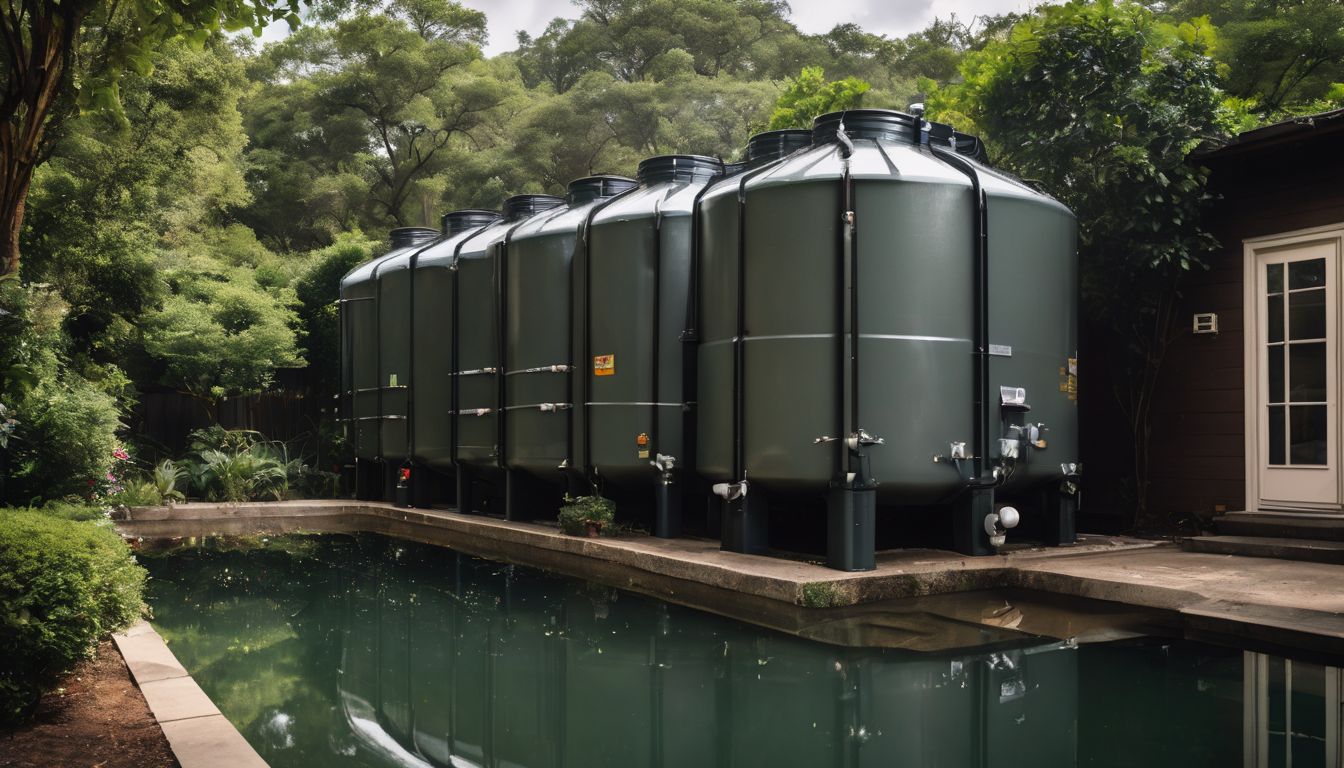Are you tired of seeing litter spoil your favourite beach? Every year, millions of tonnes of trash enter our oceans, harming marine life and coastal beauty. This blog will guide you step-by-step in organising a successful beach clean-up that makes a real difference.
Let’s turn the tide on pollution together!
Key Takeaways
- Proper planning is crucial for a successful beach clean – up, which includes choosing a location with high pollution, obtaining permissions, and picking the right time considering tide schedules.
- Gathering supplies such as biodegradable trash bags, gloves and sorting tools is important to protect volunteers and efficiently segregate recyclables from waste.
- Promoting the event through social media, community notices and collaborations can attract more volunteers and increase public awareness about marine pollution.
- Documenting the clean – up process with photos and data on trash collected helps in sharing results effectively and can inspire others to get involved in future events.
- Show appreciation for volunteers’ efforts by thanking them post – event; their hard work contributes significantly to preserving coastal environments.
Preparing for the Beach Cleanup
Choose a suitable location and time for the clean-up, obtain necessary permissions, spread the word to gather volunteers, and ensure you have all the needed supplies ready. Recruit and organise volunteers for an efficient beach clean-up.
Choose a location and time
Selecting the right spot for a beach clean-up is vital. It ensures your efforts have the maximum impact on marine pollution and community engagement. Here’s how to make an informed choice:
- Look at local coastal areas that need attention due to visible litter or known issues with marine debris.
- Research tide schedules to ensure you plan during low tide, which provides greater access to trash along the shoreline.
- Factor in the accessibility of the location for volunteers, considering parking availability and public transport options.
- Avoid dates with potential conflicts like holidays or big community events that could affect turnout or complicate logistics.
Obtain necessary permissions
To organise a successful beach clean-up, you need to ensure that you have the necessary permissions in place. Here’s how you can do this:
- Contact the local authority or relevant regulatory body to obtain permission to conduct the clean-up.
- Provide details about the planned event, including the date, time, and location.
- Understand and adhere to any specific regulations or guidelines for conducting activities on the beach or coastline.
- Communicate with local community leaders and stakeholders to gain their support and endorsement for the clean-up initiative.
Spread the word
To promote the beach clean-up event, consider these effective strategies:
- Utilise social media platforms to create event pages and share posts with relevant hashtags such as #CoastalCleanUp and #EnvironmentalConservation.
- Design eye – catching posters and distribute them at local businesses, community centres, and schools to attract more volunteers.
- Reach out to local news outlets, radio stations, and environmental organisations to publicise the event through interviews or press releases.
- Leverage word-of-mouth by encouraging volunteers to invite friends and family members to join the initiative.
- Collaborate with other environmental groups or non – profit organisations to amplify the reach of your message and mobilise a larger volunteer base.
Gather supplies
- Biodegradable rubbish bags: Use bags that are environmentally friendly and easy to dispose of.
- Gloves: Provide durable gloves to protect volunteers’ hands from sharp or hazardous materials.
- Recycling bins: Have separate bins for recyclable items such as plastic bottles and aluminium cans.
- Sorting tools: Supply sorting tools such as tongs or grabbers to safely pick up and handle rubbish.
- First aid kit: Keep a first aid kit handy in case of any minor injuries during the clean-up.
Recruit and organize volunteers
To successfully recruit and organise volunteers for your beach clean-up, follow these steps:
- Reach out to local environmental groups and organisations to seek their support in promoting the event and recruiting volunteers. Collaborate with like-minded individuals or groups who are passionate about conservation efforts.
- Utilise social media platforms, community notice boards, and local newspapers to spread the word about the beach clean-up, emphasising the importance of preserving coastal environments and encouraging public participation.
- Host an informational meeting or orientation session for potential volunteers to explain the purpose of the clean-up, assign roles and responsibilities, and provide necessary training on waste segregation and handling.
- Offer incentives such as recognition certificates, eco-friendly merchandise, or a post-cleanup celebration to appreciate the efforts of volunteers and motivate participation.
- Create a detailed schedule outlining tasks for each volunteer during the clean-up day to ensure smooth coordination and effective utilisation of resources.
The Day of the Cleanup
On the day of the cleanup, volunteers will be assigned stations and provided with necessary supplies to begin sorting and recording trash findings. Proper disposal of collected trash and cleaning up the area are crucial parts of ensuring a successful beach cleanup.
Assigning stations to volunteers
When overseeing a beach clean-up, allocating stations to volunteers is crucial for effective organisation and coverage.
- Begin by assigning specific areas of the beach or shoreline to different volunteer groups, ensuring that each section is covered thoroughly.
- Provide clear instructions and guidelines for each station, including what type of waste to focus on and safety precautions to take.
- Designate a leader for each group to ensure smooth coordination and communication among volunteers.
- Encourage volunteers to work as a team, cooperating in their designated areas and supporting one another as needed.
Sorting and recording trash findings
Once the beach clean-up is underway, it’s essential to carefully sort and record the items found. This helps to track the types of litter, monitor trends, and identify areas needing attention. Here are the key steps in sorting and recording rubbish findings:
- Separate recyclables such as plastic bottles, aluminium cans, and glass containers from non – recyclable items like food wrappers and disposable utensils.
- Categorise debris into groups like plastic waste, paper products, fishing gear, and other materials for accurate data collection.
- Use tally sheets or apps designed for beach clean-ups to document the quantity and type of rubbish collected.
- Take photographs of unique or significant items found on the beach to raise public awareness about marine pollution.
- Discuss any unusual or large – scale pollution with local authorities to address potential sources or environmental hazards.
Proper disposal of trash
- Separate recyclables such as plastics, glass, and aluminium from non-recyclable items.
- Contact local authorities or waste management services to arrange for proper disposal or recycling at designated facilities.
- Dispose of hazardous waste materials such as batteries, chemicals, and sharp objects in accordance with local regulations to prevent environmental damage.
- Avoid dumping any collected debris back onto the beach or into nearby water bodies – ensure it is all taken away for proper disposal.
Cleaning up the area
- Remove any remaining debris or litter from the beach, including small items like bottle caps, cigarette ends, and plastic straws.
- Inspect the area for any hazardous materials or sharp objects that may have been overlooked during the initial clean-up.
- Rake and smooth out any disturbed sand or soil caused by the clean-up process to leave the beach in a neat and tidy condition.
- Consider planting native vegetation or organising a dune restoration project as a follow-up effort to further protect the beach and coastal ecosystem.
After the Cleanup
Thanking volunteers, sharing results and documenting the event are important steps to acknowledge their hard work and inspire others to join future clean-ups. Ready to make a positive impact on the environment? Keep reading to learn more about planning a successful beach clean-up!
Thanking volunteers
Show gratitude to the dedicated volunteers who generously gave their time and energy to help with the beach cleanup. Express appreciation for their hard work, commitment, and contribution to a cleaner environment.
Acknowledge their vital role in making a positive impact on our coastal areas by participating in eco-friendly initiatives like this.
The volunteers have played an essential part in keeping our beaches clean, and their efforts are truly commendable. Your participation has made a significant difference! Now let’s move on to sharing the impactful results of our beach cleanup event with the community.
Sharing results
After the beach cleanup, it’s important to share the results with volunteers and the community. Displaying data on the amount and types of trash collected helps raise awareness about coastal pollution.
Documenting and sharing these findings also encourages others to get involved in similar eco-friendly initiatives, supporting litter prevention and sustainable living.
Furthermore, posting photos and stories from the event allows for a deeper connection with volunteers, fostering a sense of accomplishment and strengthening their commitment to future environmental activism.
By promoting transparency and celebrating successes, we can inspire lasting change in coastal communities.
Documenting the event
After sharing the results of your successful beach clean-up, it’s important to document the event for future reference and awareness. Take plenty of photos and videos throughout the clean-up process – before, during, and after.
Capture volunteers in action, interesting or unusual items found on the shoreline, and the transformed state of the area post-clean-up. It’s also helpful to keep a written log detailing key milestones such as volunteer turnout, amount of rubbish collected, and any unexpected challenges faced.
Utilise social media platforms to share your documentation with the wider community, encouraging others to join similar initiatives.
Maintain detailed records about the event by creating a report summarising key findings and outcomes from the clean-up effort. This report can be used to assess progress over time or to secure funding for future projects.
Tips for a Successful Beach Cleanup
When choosing a location, consider areas with high foot traffic and potential for pollution. Promote the event through social media and community bulletin boards to reach a wider audience.
Arrange for trash removal in advance to ensure a seamless cleanup process. Documenting and sharing results can inspire others to get involved in similar initiatives.
Choosing the right location
Selecting the appropriate location for a beach clean-up is crucial to its success. Look for areas with high levels of shoreline litter, especially those that are less frequently cleaned by local authorities or community groups.
Target beaches near urban centres, as they tend to accumulate more rubbish due to higher visitor numbers and limited waste management infrastructure in these areas.
Consider the accessibility of the chosen location to ensure it can accommodate volunteers and equipment easily. Additionally, assess the environmental impact – opt for beaches situated away from sensitive habitats or wildlife breeding grounds.
Promoting the event
Spread the word about the beach cleanup through social media, posters, and local community groups. Encourage friends, family, and colleagues to join in this eco-friendly initiative aimed at preserving our beautiful beaches.
Utilise hashtags like #beachcleanup or #communityservice to reach a wider audience and inspire more volunteers to participate.
Utilise your network of environmentally conscious individuals by reaching out to local environmental organisations or clubs to promote the event within their circles. Collaborating with organisations who share similar conservation goals will help maximise the outreach and impact of the beach cleanup.
Arranging for trash removal
When promoting the event, you have also made arrangements for trash removal. This step is crucial to ensure that the collected litter is disposed of properly. Contact local waste management services or recycling centers to arrange for garbage disposal after the beach cleanup.
Coordinate with them to schedule a pickup time and location, ensuring that the collected trash is appropriately managed and does not harm the environment further.
To address this issue, reach out to local waste management services or recycling centers to plan for proper disposal of gathered trash from your beach cleanup. Ensure that they are aware of the volume and type of waste being collected so that necessary arrangements can be made for responsible disposal.
Documenting and sharing results
After the successful beach cleanup, it’s important to document and share the results. Capturing data on the types and quantities of trash collected can provide valuable insights into local littering habits.
This information can be used to advocate for policy changes, educate communities about responsible waste disposal, and inspire others to participate in similar eco-friendly initiatives.
Sharing images, statistics, and personal stories from the cleanup event through social media and local news outlets can also encourage ongoing support for conservation efforts.
Conclusion
In conclusion, executing a successful beach clean-up involves careful planning and coordination. Choosing the right location, promoting the event, and arranging for rubbish removal are key steps.
Documenting and sharing the results can inspire others to join eco-friendly initiatives. Thanking volunteers is crucial in recognising their contributions to community service and litter removal efforts.
FAQs
1. How do I start planning a beach clean-up?
Begin by setting a date for your beach clean-up and recruit volunteers who are eager to take part in this community service.
2. What should I consider when executing a successful beach clean-up?
Focus on gathering eco-friendly materials for litter removal, organise teams of volunteers, and ensure everyone knows their responsibilities on the day.
3. How can we make sure our beach clean-up is eco-friendly?
Use tools and practices that protect the environment, like biodegradable bags for litter removal, and educate your team about eco-friendly initiatives during the event.
4. Where can I find people who want to volunteer for a beach clean-up?
Reach out through social media, local community centres, schools or environmental groups to find individuals interested in volunteering for your ecofriendly initiative.





